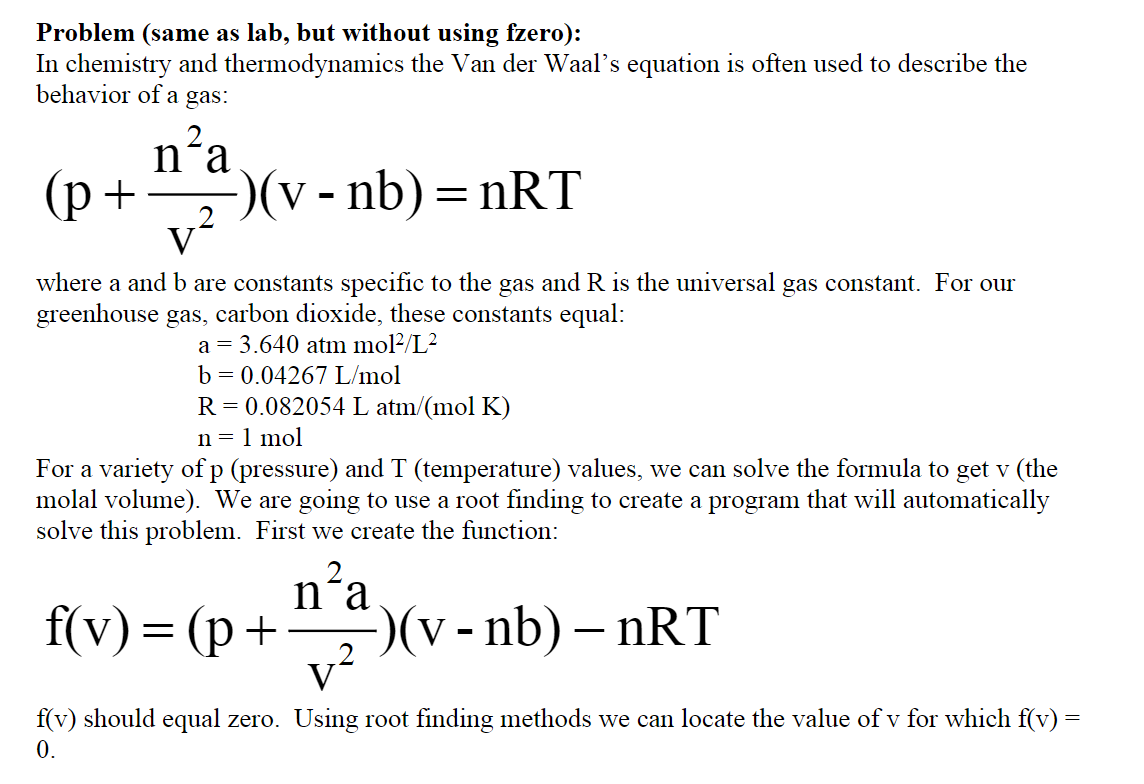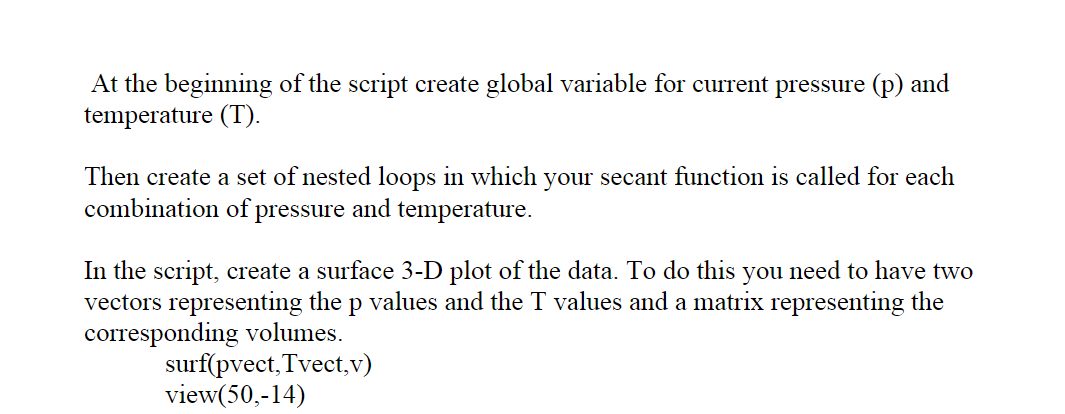Home /
Expert Answers /
Computer Science /
matlab-coding-problem-having-trouble-wrapping-my-head-around-this-one-im-posting-multiple-times-pa765
(Solved): Matlab coding problem. Having trouble wrapping my head around this one. Im posting multiple times ...
Matlab coding problem.
Having trouble wrapping my head around this one.
Im posting multiple times to get different answers. If you have answered this already, please ignore. i want several different answers so i can better learn
Problem (same as lab, but without using fzero): In chemistry and thermodynamics the Van der Waal's equation is often used to describe the behavior of a gas: \[ \left(p+\frac{n^{2} a}{v^{2}}\right)(v-n b)=n R T \] where \( \mathrm{a} \) and \( \mathrm{b} \) are constants specific to the gas and \( \mathrm{R} \) is the universal gas constant. For our greenhouse gas, carbon dioxide, these constants equal: \[ \begin{array}{l} \mathrm{a}=3.640 \mathrm{~atm} \mathrm{~mol}^{2} / \mathrm{L}^{2} \\ \mathrm{~b}=0.04267 \mathrm{~L} / \mathrm{mol} \\ \mathrm{R}=0.082054 \mathrm{~L} \mathrm{~atm} /(\mathrm{mol} \mathrm{K}) \\ \mathrm{n}=1 \mathrm{~mol} \end{array} \] For a variety of \( \mathrm{p} \) (pressure) and \( \mathrm{T} \) (temperature) values, we can solve the formula to get \( \mathrm{v} \) (the molal volume). We are going to use a root finding to create a program that will automatically solve this problem. First we create the function: \[ f(v)=\left(p+\frac{n^{2} a}{v^{2}}\right)(v-n b)-n R T \] \( f(v) \) should equal zero. Using root finding methods we can locate the value of \( v \) for which \( f(v)= \) 0.
Task: 1. Write a function that returns \( f(v) \) given \( v, a, b, R, T, p \). The value of \( v \) should be passed to the function. The other values should be global variables. 2. Write a function that uses the bisection root finding methods to solve \( f(\mathrm{v})=0 \). This function should call the function from task 1 to get the value of \( f(v) \). 3. Write a script that creates two vectors for values of pressure between 1 and \( 1000 \mathrm{~atm} \) and Temperatures between 200 and \( 800 \mathrm{~K} \) using the code: pvect \( = \) logspace \( (1,3,20) \); Tvect \( = \) linspace \( (300,800,20) ; \)
At the beginning of the script create global variable for current pressure (p) and temperature \( (\mathrm{T}) \). Then create a set of nested loops in which your secant function is called for each combination of pressure and temperature. In the script, create a surface 3-D plot of the data. To do this you need to have two vectors representing the \( p \) values and the \( T \) values and a matrix representing the corresponding volumes. surf(pvect,Tvect, \( \mathrm{v}) \) view \( (50,-14) \)
Expert Answer
This code is deal with to find the ecact amount vecy clearly 1 #include using namespace std; ######## 3 8 tem.push_back( rand() % 800); return; 15 18


